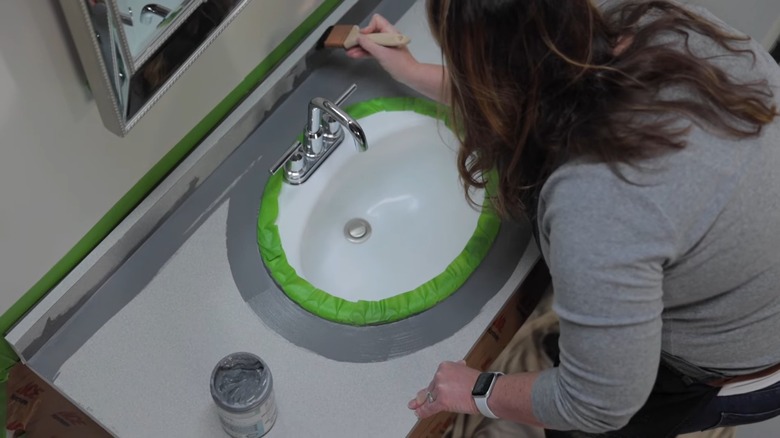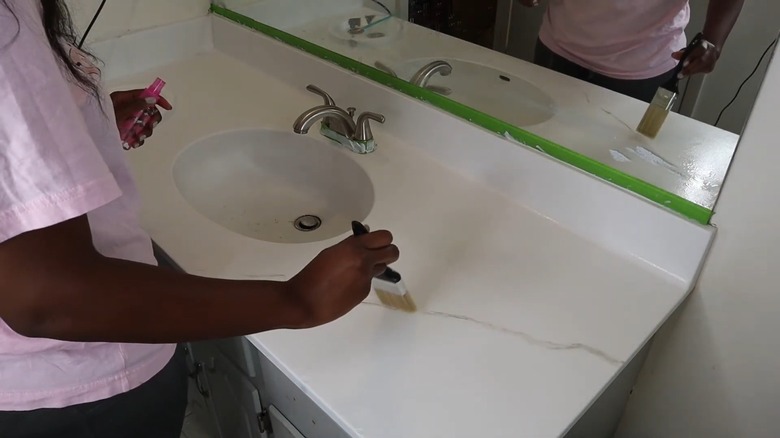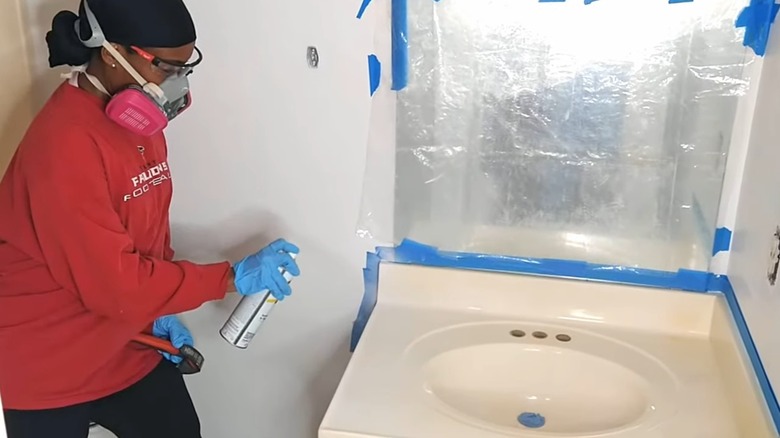Read This Before Deciding To Paint Your Bathroom Countertops
Are your bathroom countertops keeping the rest of the room from being a spa-like oasis? Then, a can of paint might be your solution. Yes, you can paint your laminate, tile, or wood bathroom countertops. It is actually a great way to update your space without replacing the entire block. However, before you go paint shopping, you also need to consider that this is a time-consuming project that can create design problems if not done properly.
Painted vanities are a chic bathroom countertop idea that won't break the bank and are ideal for budget-conscious DIYers who want to revamp their space. However, if you're looking for a quick, foolproof project, this isn't it. You need the right materials to ensure your painted counters can handle the traffic, moisture, and humidity of the loo. There are many benefits and precautions to this type of bathroom update, so you'll want to be in the know to ensure it's the right project for you and your home.
Paint is a simple way to upgrade countertops
The best thing about painting your countertops is that it is affordable. Replacing your bathroom countertops can cost thousands of dollars. You have to account for removing the old vanity, the cost of the new counter, and the labor for a professional to install it. On the other hand, painting the existing surface is way less expensive. Plus, it's DIY-friendly. You can save on labor and material costs. There are also countertop painting kits that bundle all the products you need, which makes the process even easier. It is one way to help cut the cost of your bathroom remodel. The extra dollars you save can go towards areas you don't want to cut corners, like plumbing.
From a design standpoint, painted counters are chic and complement any interior aesthetic. Not only can you choose any hue your heart desires, but you can also incorporate patterns. Use stamps, stencils, or hand-painted designs to create a one-of-a-kind counter. Further, it's as straightforward as brushing on a new coat when you want to change things up. The style is easy to change so you can enjoy new countertops at a fraction of the cost.
It is a tedious process not suitable for every counter type
While you can give your dated bathroom countertop a major upgrade with paint, not every surface can tolerate a new coat of color. Non-porous stone, like quartz, shouldn't be painted. It won't absorb the paint, making the surface prone to chipping. Covering up the luxury look of stone counters may even lower your home's resale value, as you'll lose a beloved feature. Plus, you'll need to be sure you really want to paint the counters because the process is not reversible. Take one last look at your bathroom countertop because it won't ever look like that again.
Although DIY-friendly, painting the bathroom counter isn't like painting a wall. It is a time-consuming process. The surface needs to be sanded, cleaned, primed, painted, and then sealed. It can take at least three layers of paint and sealant for the desired look that can also withstand humidity and moisture. Plus, you need each layer to dry completely before adding the next one. This can leave your bathroom vanity out of commission for a few days. And it's not a process you can take shortcuts on either; you might just end up with flaking paint that requires endless touch-ups. If you're going to paint your laminate, tile, or wood bathroom countertop, then it can be a worthwhile renovation as long as you're committed to doing the job right.


